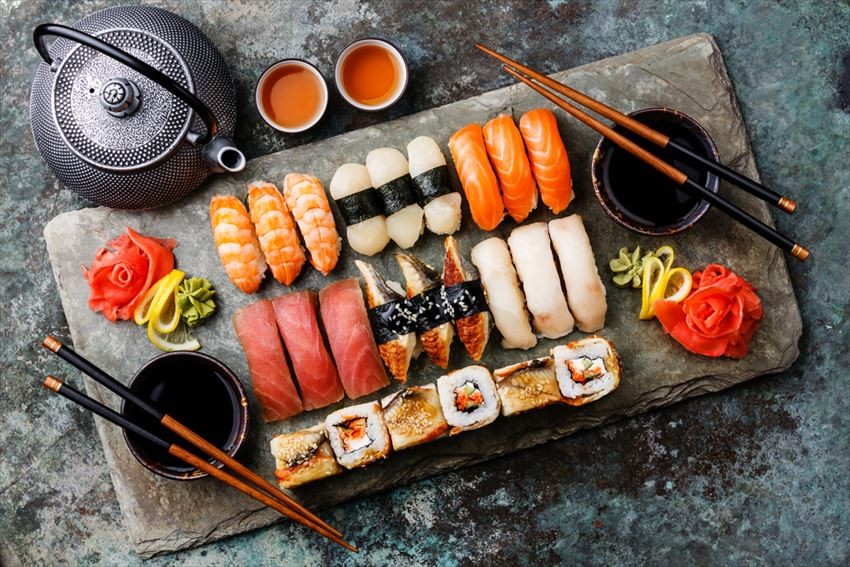
When you visit Japan, you may not know much about this vibrant and exciting country, but one of the things that you probably most closely associate it with will be the food, or sushi to be exact.
Almost everyone the world over is familiar with this rice-based dish, and you will find sushi restaurants in many countries thanks to the popularity of this cuisine. You may have tried sushi before outside of Japan, but how much do you really know about it? What kinds of sushi are there? And what dos and don’ts do you need to know when dining at a sushi restaurant in Japan?
We tell you everything you need to know about eating sushi...
What is sushi?
In its most basic form sushi is rice that has been seasoned with vinegar. The rice is then topped with items like fish, seafood, meat, or even vegetables. Many traditional Japanese sushi chefs will tell you that the most important part of a piece of sushi is the rice rather than the topping, as this is the foundation of the meal and needs to be cooked to perfection. Sushi can be presented in different forms, such as rolls, mounds, or hand rolls.
What kinds of sushi are there?
If you are going to try sushi then you need to know the different kinds available. There can be many different types of sushi, but the mains ones are as follows:
Nigiri Sushi:
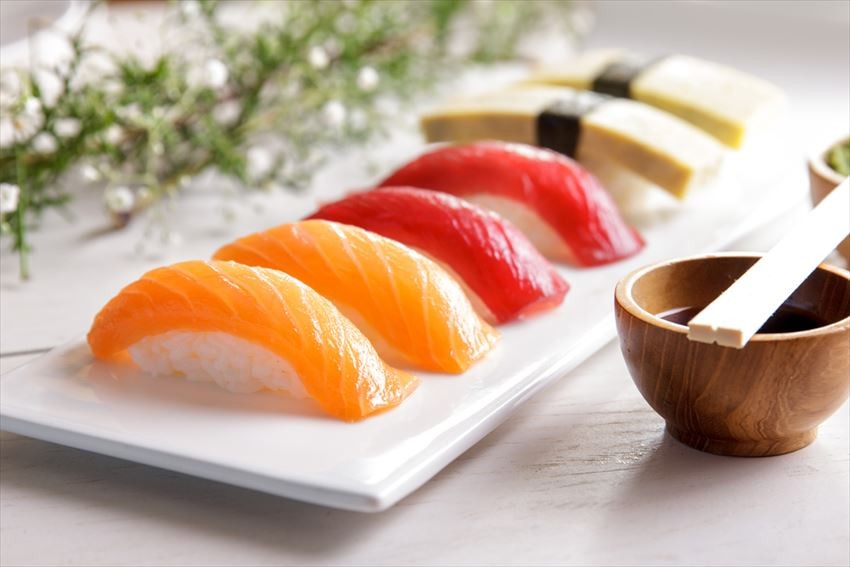
When you think of a traditional piece of sushi, you are probably thinking of the nigiri style. Nigiri sushi is made when the sushi chef fashions a mound of rice into a smooth rectangle shape and then add a topping to it, usually in the form of fish or seafood. Depending on the style, the toppings are sometimes attached to the rice with a thin strip of seaweed.
Hosomaki Roll:
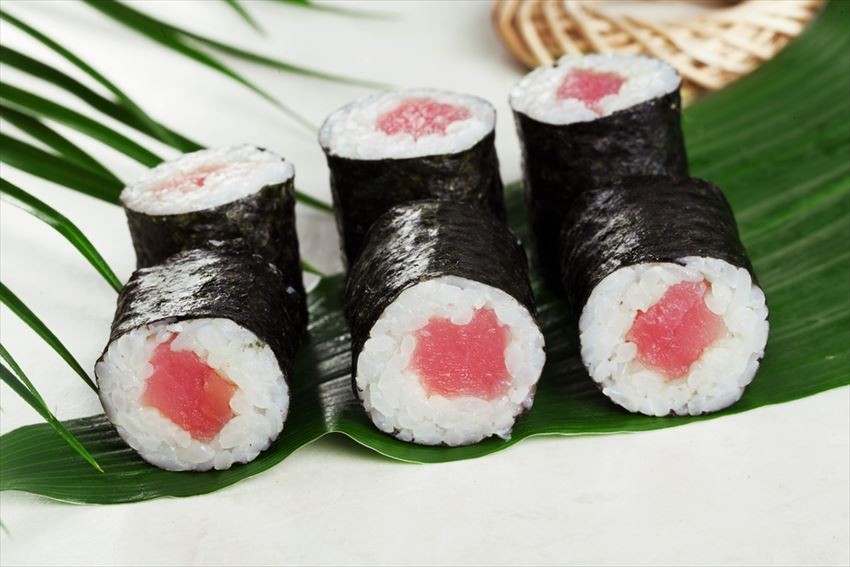
Hosomaki roll is made using a bamboo mat which allows it to be rolled up easily. On the outside of the piece of sushi, you will find nori or a sheet of dried seaweed, and the filling will consist of rice as well as one other ingredient. The Hosomaki roll is tightly rolled into a long sausage shape and then cut into even pieces before being served.
Futomaki Sushi:
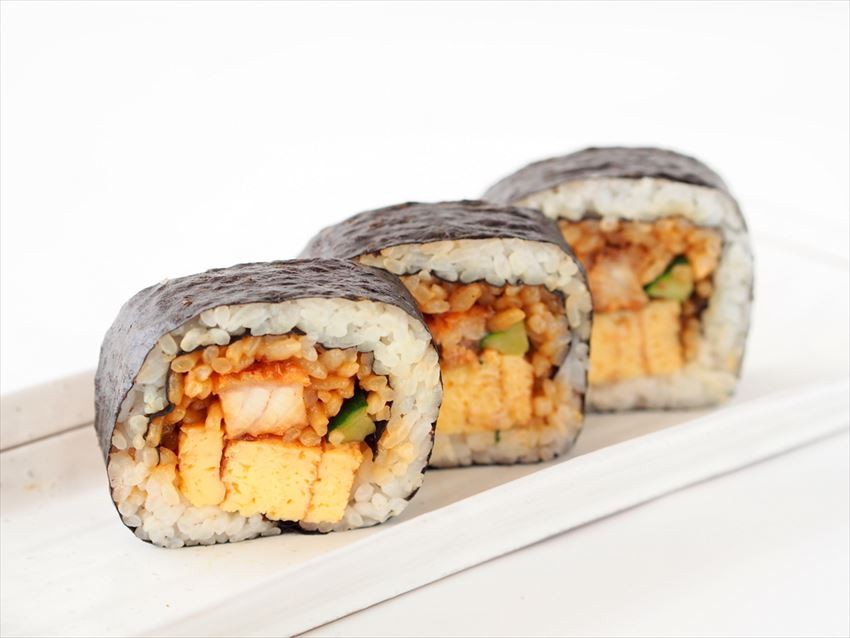
Futomaki Sushi is similar to Hosomaki roll although it is just made up of more fillings. Usually, two or more ingredients are used and the Futomaki is larger than the Hosomaki roll as a result.
Uramaki Roll:
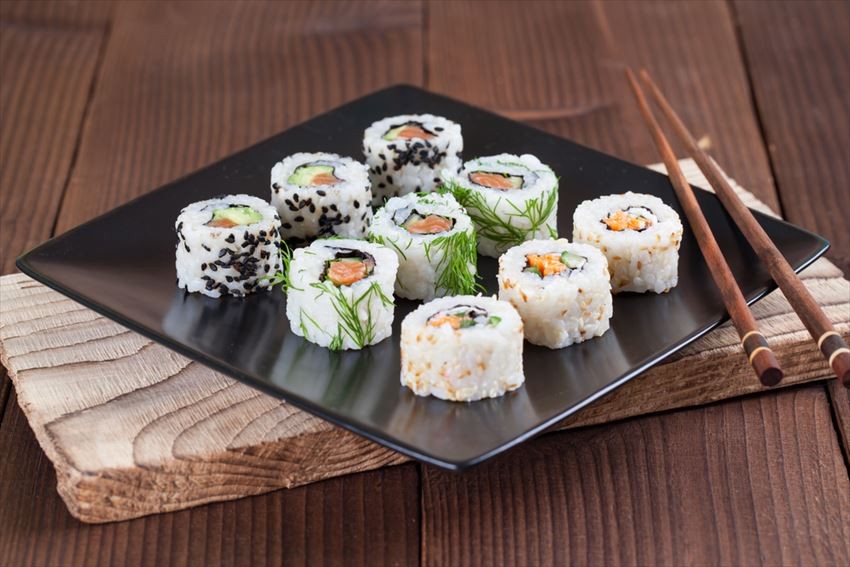
Uramaki roll is another kind of roll but this time it is the other way around. The nori or seaweed is on the inside of the roll and the rice is on the outside. Usually, two fillings or more are packed inside the Uramaki roll. This kind of sushi is said to have originated for people who don’t particularly like the taste of nori.
Temaki sushi:
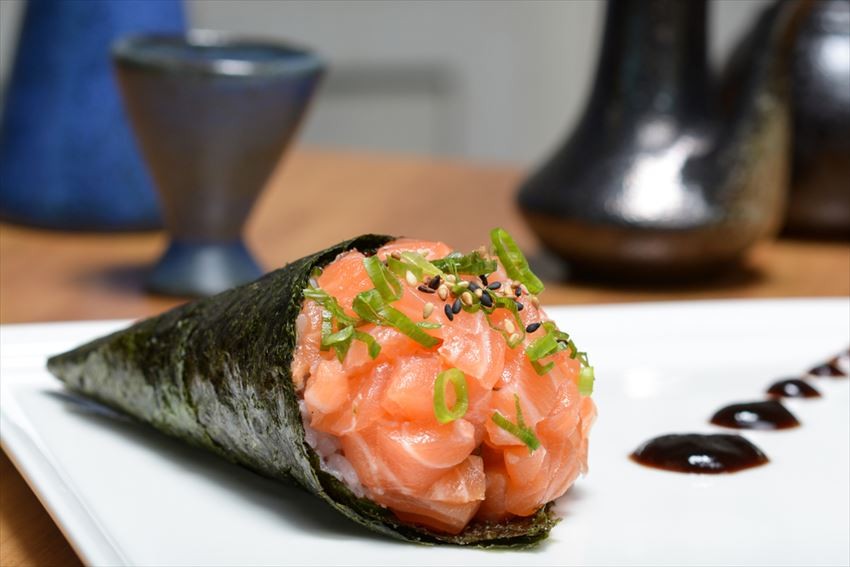
Temaki sushi is a hand-rolled piece of sushi and is not made using a bamboo mat, so it is not as tightly packed together. A piece of nori or seaweed is wrapped in a cone shape around rice and other fillings and then eaten by hand after being dipped in soy sauce.
Gunkan maki sushi:
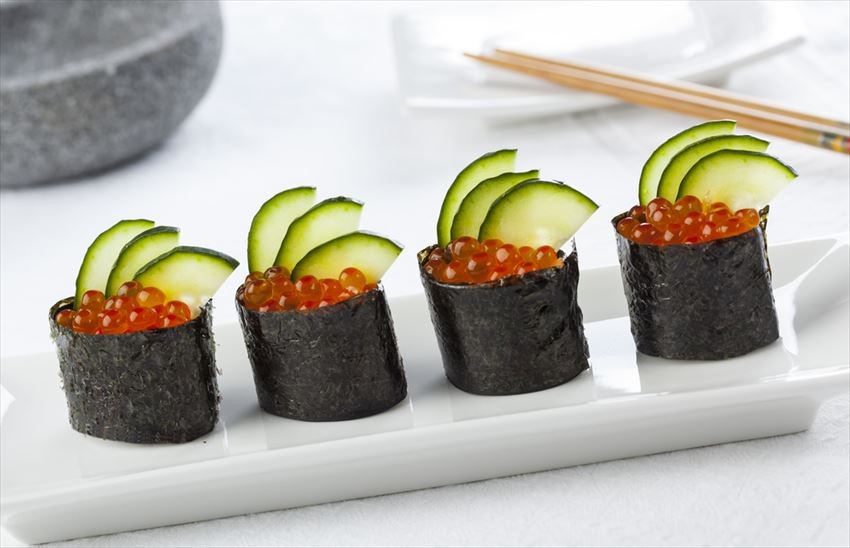
This kind of sushi is sort of like a mix of the nigiri style and the maki style. A mound of rice is formed into a rectangle and then a band of seaweed or nori is wrapped around the outside of the rice. The rice is then topped with items like a roe, and the seaweed wrapping stops the topping from falling off.
What about the condiments?
Sushi is very simple food, so in keeping with this, it comes with some basic condiments that help to bring out the flavors of the other ingredients.
When you sit down to eat sushi you will almost always find soy sauce, wasabi paste, and pickled ginger known as gari on the table.
The wasabi and soy sauce are added directly to the sushi as seasonings for the food, and the pickled ginger is used to cleanse the palate between each different dish.
How do I eat sushi?
A lot of people don’t realize that Japanese people often eat sushi with their hands rather than with chopsticks. Nigiri sushi is usually eaten using just your fingers as are other types of sushi such as hand rolls or temaki.
Common mistakes:
One of the most common mistakes that people make when they eat sushi is to mix the condiments, in particular, the wasabi paste and the soy sauce. In Japan, this practice is frowned upon and it is customary to add the wasabi paste directly to the sushi yourself according to your taste.
Another common mistake for foreigners eating sushi for the first time is the use of soy sauce, which is usually used sparingly to bring out the natural flavors of the food. Visitors often dunk their entire piece of sushi into a bowl of soy sauce and wasabi, although this is incorrect in Japan. Instead, you should turn the sushi over so that it is fish side down and only lightly touch it to the soy sauce so that you get a slight trace of it on the topping.
Whatever you do when you are eating sushi or any Japanese food for that matter, make sure that you avoid passing anything to another person from your chopsticks to theirs. Passing something chopstick to chopstick is actually considered bad luck as it is associated with one of the acts that are performed during a Japanese funeral, so make sure that you don’t do this at any point during a meal!
This article was published in December 2016
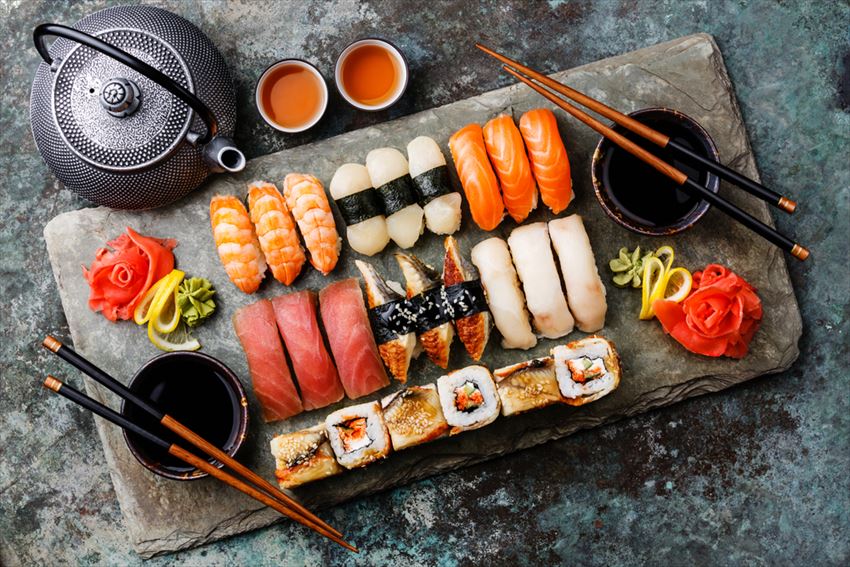
Comments